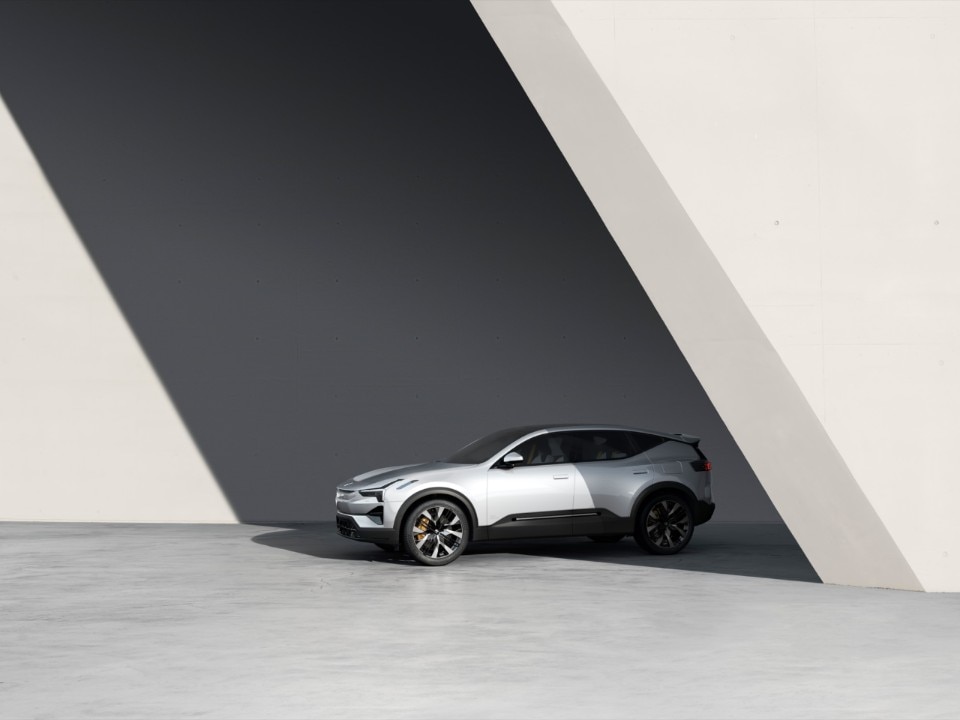Swedish all-electric car brand Polestar partnered with the British creative studio INK on the new imagery for the launch of the Polestar 3, the company’s third model. INK picked photographer Benedict Redgrove to design the artwork and envision the settings. The result is a series of striking digitally enhanced pictures that pair the minimalistic design of Polestar 2 with the futuristic architecture of Zaha Hadid’s Napoli Afragola Station and Salerno Maritime Terminal.
To align with Polestar’s futuristic vision, INK and Benedict employed a minimalist approach and CGI technologies to craft the utopian backdrop, drawing inspiration from science fiction movies and carefully manipulating the lighting and proportions to highlight the car’s otherworldly elegance.
“The Afragola station and Salerno Maritime Terminal are striking architectural designs that stood out during the initial research process for the launch of Polestar 3”, David Macey, Co-Founder at Ink, tells Domus. “They share a common theme, a futuristic element between Zaha Hadid and Polestar, which worked well together. Zaha’s work is uncompromising and clearly futuristic, but the forms also feel progressive and somehow optimistic. The buildings’ sculpted forms share a pared-back aesthetic that can also be seen in Polestar and Benedict’s work.”

INK and Redgrove started with photography of the real-world locations that helped provide texture, give a sense of scale, and infuse the final CGI-enhanced results with a natural and credible look that avoids the pitfalls of digitally generated imagery.
“With real-world architectural photography, you have a series of ‘reasons why’ regarding how you ‘believe’ what you’re looking at. This is why so much architectural and automotive imagery today is lacking in realism”, says Macey. “And even though we clean and refine the architecture, our 'reductive process’ is all about knowing where to draw the line. We’ve spent years pushing CGI to look more photographic and photography to be cleaner, and so there is a delicate balance to be struck”.
It’s not the first time that Polestar has partnered with INK to create this type of imagery. For the launch of Polestar 2, the British creative agency picked the Dongdaemun Design Plaza, the neo-futuristic Seoul landmark designed by Hadid and Samoo.

“We believe that audiences will feel a strong sense of confidence in the design of Polestar 3, which is reflected in the striking, bold and expressive work of Zaha Hadid”, says Macey. “We see the merging of architecture and automotive design becoming more popular in the future, with brands using architecture to enhance the design of their vehicles.”
Polestar 3 is the third model in the Swedish EV brand’s portfolio. Touted as “the SUV for the electric age,” the car was designed to be a pure electric Sport Utility Vehicle from the ground up. In keeping with Polestar’s simplistic yet modern design, the Polestar 3 is defined by sculpted surfaces and optimized aerodynamics. Announced in 2022 and available in early 2024, the Polestar 3 will have a range of up to 610 Km and power of up to 510 bhp.

Outdoors: at the Milano Design Week, a new product by Nardi
With a patented system and durable, sustainable materials, Plano is Nardi's signature lounger designed by Raffaello Galiotto.













